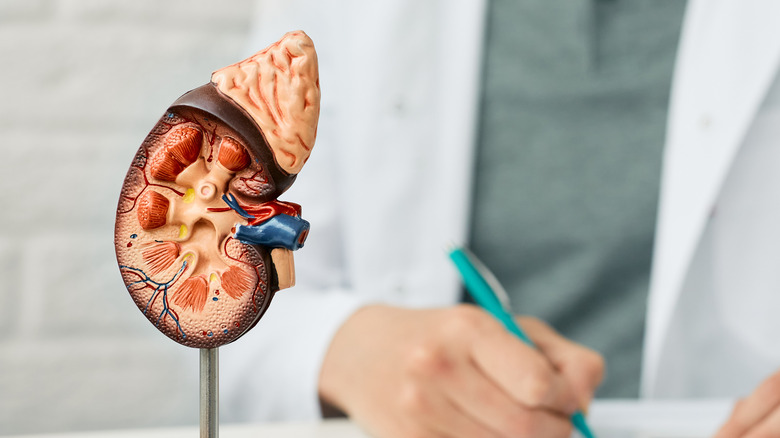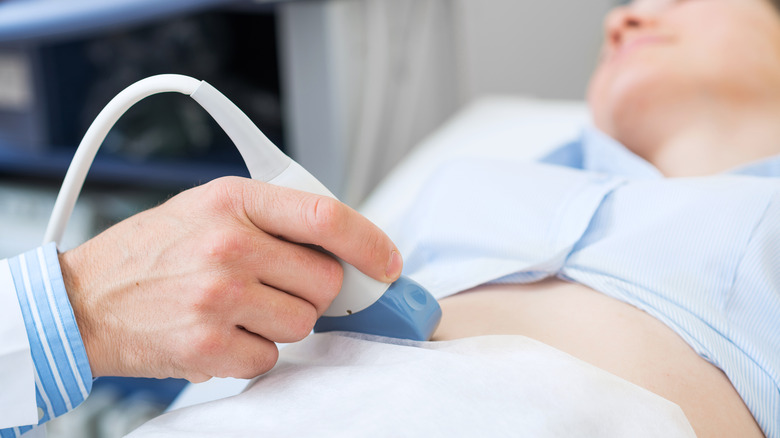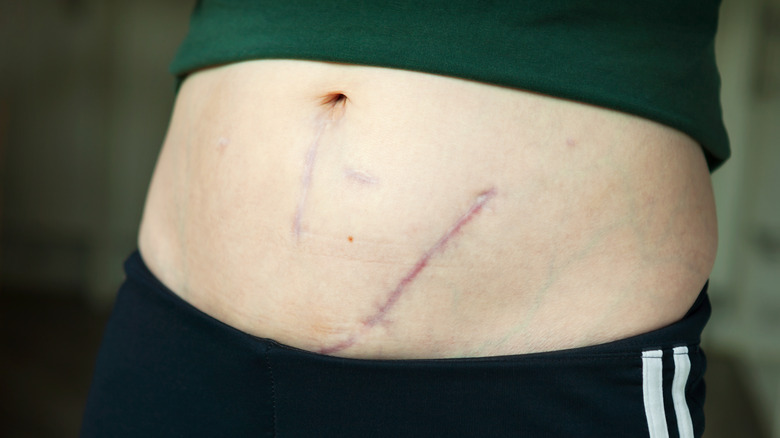Sarah Hyland's Kidney Disease Explained
Sarah Hyland may keep it light and funny on social media and TV, but underneath her positive attitude, she's one of many people who suffer from kidney dysplasia. Hyland became vocal about her experience with kidney dysplasia and her treatment for it, which included dialysis and two kidney transplants before she reached her thirties (via National Kidney Foundation).
She hoped that sharing her story would bring awareness to people who suffer from diseases that we can't see the symptoms of. Sarah has said in interviews that even though she looked fine, the symptoms of her kidney dysplasia were really hard to deal with sometimes, especially working long hours on set as an actress. Her case was one of the more severe examples of someone with kidney dysplasia, but her story resonated with many people who have also experienced some of the same symptoms and felt as though they were overlooked because they did not appear physically ill.
What is kidney dysplasia?
Kidney dysplasia is a condition that develops in a child during pregnancy in which one or both kidneys do not develop normally. Specifically, the internal structures of the kidney do not form, and oftentimes cysts form around the affected kidney and prevent it from doing its job of processing urine in the body (via Urology Associates).
Kidney dysplasia affects 1 in 4,000 babies, although this number is estimated to be low because kidney dysplasia often goes undiagnosed if it is not caught via ultrasound while a woman is pregnant. The severity of the condition is also highly variable, depending on how many kidneys are affected by it. If a baby has more severe kidney dysplasia, meaning both of their kidneys did not develop, they often do not survive birth. However, the human body can survive with only one functioning kidney, so if only one kidney is affected by kidney dysplasia, a baby still has a high chance of living a fairly normal life (via NIDDK).
In other more severe cases like that of Sarah Hyland, medication helped for a short time, but she required dialysis and two kidney transplants by the time she reached her 20s (via National Kidney Foundation).
What are the symptoms of kidney dysplasia?
After birth, many people with kidney dysplasia may not exhibit any symptoms that would suggest they only have one working kidney. Because of this, kidney dysplasia often goes undiagnosed if it is not identified by ultrasound while the baby is still in the womb.
The kidneys are in charge of filtering blood and urine in the body, so in cases where the kidney dysplasia is more severe, noticeable symptoms related to this may start to occur like increased urinary tract infections (UTIs), high blood pressure, or hydronephrosis, which is when urine isn't able to flow normally and causes kidney swelling and damage (via NIDDK).
In some cases, the cysts that grow around the kidneys can prevent them from working at all, and cause someone to go into renal (kidney) failure. Renal failure can feel like a cold to some people and they experience fatigue, nausea, shortness of breath, and difficulty sleeping (via Healthline). Those whose bodies go into renal failure, like Sarah Hyland, need a more aggressive form of treatment in order to stay alive.
Can you do anything to prevent kidney dysplasia?
Many doctors have identified certain drugs that pregnant mothers take as a possible cause of kidney dysplasia in their children. Some of these include illegal drugs, but medication for high blood pressure or seizures that is taken while pregnant has been thought to be related to kidney dysplasia (via Everyday Health). In other instances where drugs like this are not taken during pregnancy, a genetic cause may explain why a baby develops kidney dysplasia.
Women who become pregnant should talk to their doctors about the medications that they are taking to determine if any of them can cause complications like kidney dysplasia in their babies. Since kidney dysplasia is fairly common, OBGYN's can offer guidance on specific medications that may be problematic. In the case of the genetic explanation for kidney dysplasia, like with many other genetic conditions, there is no way to prevent kidney dysplasia from happening (via NIDDK).
How do you treat kidney dysplasia?
In cases where kidney dysplasia is not severe, someone with the condition may not require any treatment at all. Most people can function normally with only one good kidney, so even if they have been diagnosed with kidney dysplasia before they were born, they may not have any symptoms and will feel completely healthy.
However, when kidney dysplasia reaches the point of chronic kidney disease, more aggressive and proactive treatments may be necessary to keep the body from shutting down. This was the case with Sarah Hyland, who started dialysis, a process that cleans your blood when your kidneys fail to do so, when her kidney dysplasia got more serious (via National Kidney Foundation).
Dialysis may not be enough to keep those with severe kidney dysplasia alive either, so in cases like that, a kidney transplant is the last resort. If your kidneys are failing, a transplant is one of the only ways to treat renal failure (via Healthline). Sarah Hyland was very fortunate that her family members were able to donate their kidneys to her. Both her father and brother donated kidneys to her; her brother donated after the first kidney transplant rejected. However, the waiting list for kidney transplants consists of more than 90,000 people. Many people experiencing kidney failure wait every year for a transplant and unfortunately a lot of people will die before they have the opportunity to get a transplant (via Everyday Health).
Is kidney dysplasia curable?
Like many other genetic conditions, kidney dysplasia is not curable. However, due to the variation in the severity of cases, the amount of treatment required and the condition of life of someone who has kidney dysplasia can vary as well. Like we mentioned above, for someone who only has kidney dysplasia in one kidney, treatment may not be necessary because the health of the person is not affected at all by the loss of one kidney's function. However, those who have kidney dysplasia in both kidneys are more likely to develop chronic kidney disease and will most likely require more intense treatment in order to maintain a comfortable standard of living (via NIDDK).
If you or your child is diagnosed with kidney dysplasia, it's important to talk to a healthcare provider about what your treatment options are. There's no "right" treatment for everyone who suffers from kidney dysplasia; treatment will most likely consist of some combination of the different treatment options that we talked about earlier. Thankfully, due to the treatment options available, many people like Sarah Hyland who are diagnosed with kidney dysplasia are able to live out their lives as healthy as possible.






